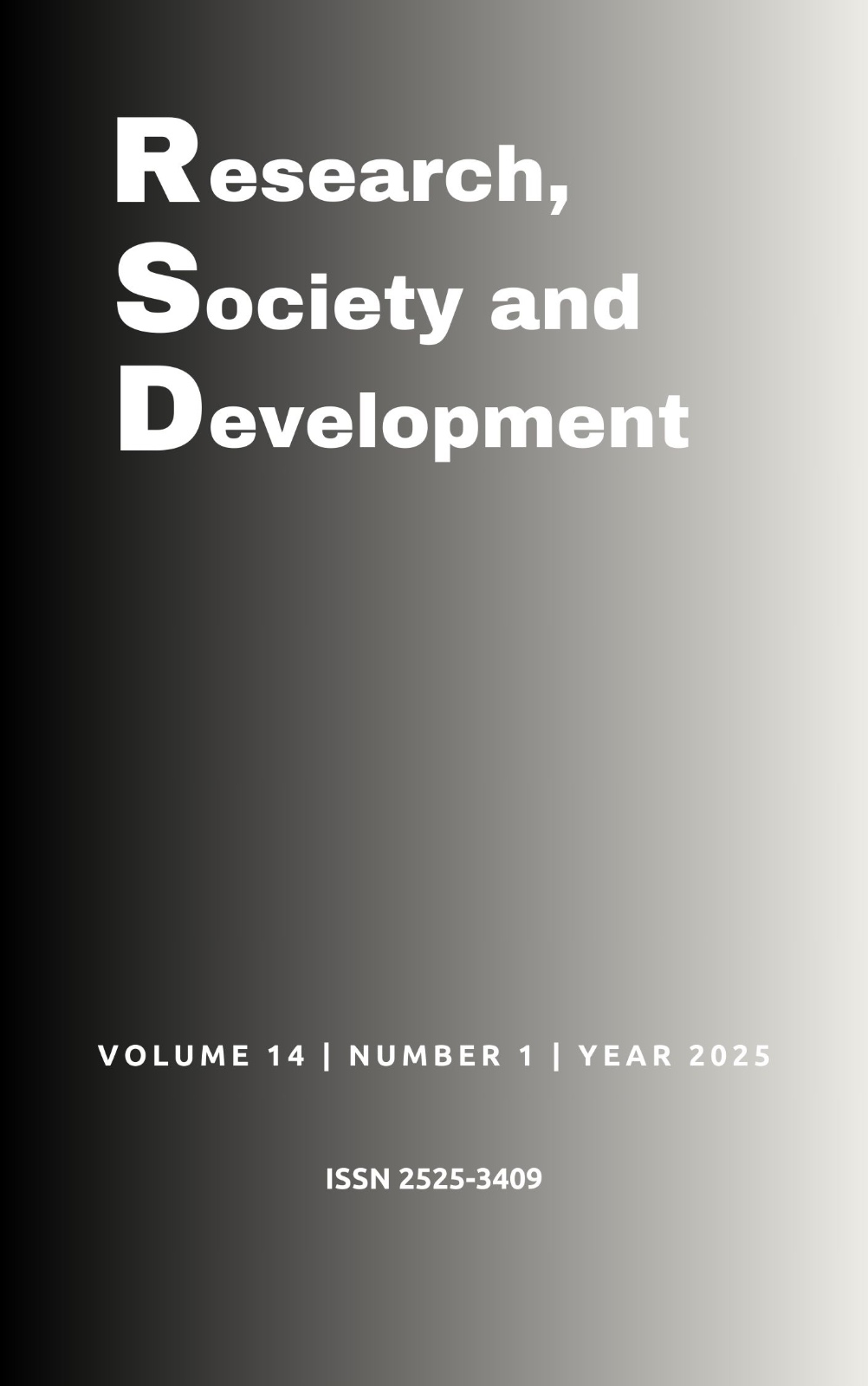Deaf education, the active search for students and the proposed bilingual libras-português school in Parnaíba-PI
DOI:
https://doi.org/10.33448/rsd-v14i1.48006Keywords:
Inclusion; Bilingual; Deaf; Public Policy.Abstract
The aim of this study is to analyze the actions and strategies carried out in the active search for deaf students as a way of guaranteeing access and permanence in the bilingual school - libras-português in Parnaíba-PI. Brazilian legislation, considering the Federal Constitution (CF), the Statute of the Child and Adolescent (ECA) and the Law of Guidelines and Bases (LDB), which establish education as a right for all, and the specific laws on inclusive education, do not guarantee its implementation. Students who are deaf or hard of hearing become more marginalized due to the communication barrier, when there is no use of Libras, which is considered indispensable for their development. Consequently, there is a call for urgent measures to ensure that deaf people have bilingual education from an early age. Thus, this qualitative investigation consists of a documentary analysis of the Pedagogical Political Project of the bilingual libras-português school in Parnaíba (PI) and data obtained from open-ended interviews with representatives of the bilingual school, the only one in Piauí, associations and social movements. The results helped to identify challenges and highlight the struggle of philanthropic institutions to maintain and guarantee access, permanence and success, in the face of a scenario of reduced public policies. In this way, we consider the need for educational policies at all levels of government to be designed in tandem with language policies in order to guarantee deaf students' right to quality education.
References
Brasil. (1988). Constituição da República Federativa do Brasil de 1988. Brasília, DF: Presidente da República. https://www.planalto.gov.br/ccivil_03/constituicao/constituicao.htm.
Brasil. (1996). Estatuto da Criança e do Adolescente: Lei federal nº 8069, de 13 de julho de 1990. https://www.planalto.gov.br/ccivil_03/leis/l8069.htm.
Brasil. (1996). Ministério de Educação e Cultura. LDB - Lei nº 9394/96, de 20 de dezembro de 1996. Estabelece as Diretrizes e Bases da Educação Nacional. Brasília: MEC. https://www.planalto.gov.br/ccivil_03/leis/l9394.htm.
Brasil. (2024). Lei nº 14.191, de 3 de agosto de 2021. Dispõe sobre a modalidade de educação bilíngue de surdos na LDB. http://www.planalto.gov.br/ccivil_03/_ato2019-2022/2021/Lei/L14191.html.
Bardin, L. (2016). Análise de Conteúdo. Editora Edições 70.
Creswell, J. W. (2007). Projeto de pesquisa: métodos qualitativo, quantitativo e misto. Editora Artmed.
IBGE (2010). Instituto Brasileiro de Geografia e Estatística. https://censo2010.ibge.gov.br/apps/mapa/. IBGE (2024). Instituto Brasileiro de Geografia e Estatística. https://censo2022.ibge.gov.br/apps/pgi/#/mapa/.
IBGE (2024). Instituto Brasileiro de Geografia e Estatística. https://censo2022.ibge.gov.br/apps/pgi/#/mapa/.
Dayrell, J. (1996). A escola como espaço sócio-cultural. Múltiplos olhares sobre educação e cultura. Belo Horizonte: UFMG, 194, 136-162.
Federação Nacional de Educação e Integração dos Surdos. (2013). A luta da comunidade surda brasileira pelas escolas bilíngues para surdos no Plano Nacional da Educação – PNE Rio de Janeiro: Autor.
Gala, A. S. (2024). Censo IBGE 2022: saiba qual é o cenário das pessoas com deficiência no Brasil. Hand Talk, 2024.
https://www.handtalk.me/br/blog/censo-ibge-2022/.
Goldfeld, M. (1997). A criança surda: linguagem e cognição numa perspectiva sociointeracionista. Editora Plexus. https://books.google.com.br/books?id=bM_MhU5SUWsC&printsec=frontcover&hl=pt-BR#v=onepage&q&f=false.
Godoy, A. S. (1995). Pesquisa Qualitativa: tipos fundamentais. Revista de Administração de Empresas, São Paulo, SP. 26(2).
https://doi.org/10.1590/S0034-75901995000300004.
Piauí (2022). Leis Municipais. Lei Complementar 56 2022 de Parnaíba PI.
Lima, C. M. de. (2015). Educação de surdos: desafios para a prática e formação de professores. Wak Editora.
Lodi, A. C. B. (2021). Ensino da língua portuguesa como segunda língua para surdos: impacto na educação básica. In: Lacerda, C. B. F.; Santos, L. F. (org.). Tenho um aluno surdo, e agora? introdução à libras e a educação de surdos. São Carlos: EdUFSCar.
Lodi, A. C. B. (2015). Ensino da Língua Portuguesa como segunda língua para surdos. In: Lodi, A. C. B., Mélo, A. D. B., Fernandes, E. (org.). Letramento, bilinguismo e educação de surdos. (2 ed.). Editora Mediação.
Mélo, A. D. B., Araújo, J. R, Soares, F. P. (2015). O direito dos surdos à educação (um estudo com jovens de 14 a 22 anos). In: Lodi, A. C. B., Mélo, A. D. B., Fernandes, E. (org.). Letramento, bilinguismo e educação de surdos. (2 ed.). Editora Mediação.
Minayo, M. C. de S. (org.) (2001). Pesquisa Social. Teoria, método e criatividade. (18 ed.). Editora Vozes.
Nascimento, C. S. S., Pereira, A., Silva, A. P. S., Marques, C. M. G., Val, D. de A. et al (2024). Projeto Político Pedagógico. Escola municipal bilingue libras/português de Parnaíba-PI. Parnaíba: Piauí.
Quadros, R. M. (1997). Educação de Surdos: A Aquisição da Linguagem. Editora Artes Médicas.
Quadros, R. M. (2011). Língua de herança: língua de sinais. Editora Penso.
Quadros, R. M. (2015). O “BI” em bilinguismo na educação de surdos. In: Lodi, A. C. B., Mélo, A. D. B., Fernandes, E. (org.). Letramento, bilinguismo e educação de surdos. (2 ed.). Editora Mediação.
Quadros, R. M. de. (2017). Língua de Herança: a Língua Brasileira de Sinais. Editora Penso.
Sassaki, R. K. (2009). Inclusão: acessibilidade no lazer, trabalho e educação. Revista Nacional de Reabilitação (Reação), 12, 10-16.
Skliar, C. (2016). Os estudos surdos em educação: problematizando a normalidade. In: Skliar, C. (org.). A surdez: um olhar sobre as diferenças. (8 ed.). Editora Mediação.
Downloads
Published
How to Cite
Issue
Section
License
Copyright (c) 2025 Maria Estely Rodrigues Teles

This work is licensed under a Creative Commons Attribution 4.0 International License.
Authors who publish with this journal agree to the following terms:
1) Authors retain copyright and grant the journal right of first publication with the work simultaneously licensed under a Creative Commons Attribution License that allows others to share the work with an acknowledgement of the work's authorship and initial publication in this journal.
2) Authors are able to enter into separate, additional contractual arrangements for the non-exclusive distribution of the journal's published version of the work (e.g., post it to an institutional repository or publish it in a book), with an acknowledgement of its initial publication in this journal.
3) Authors are permitted and encouraged to post their work online (e.g., in institutional repositories or on their website) prior to and during the submission process, as it can lead to productive exchanges, as well as earlier and greater citation of published work.

